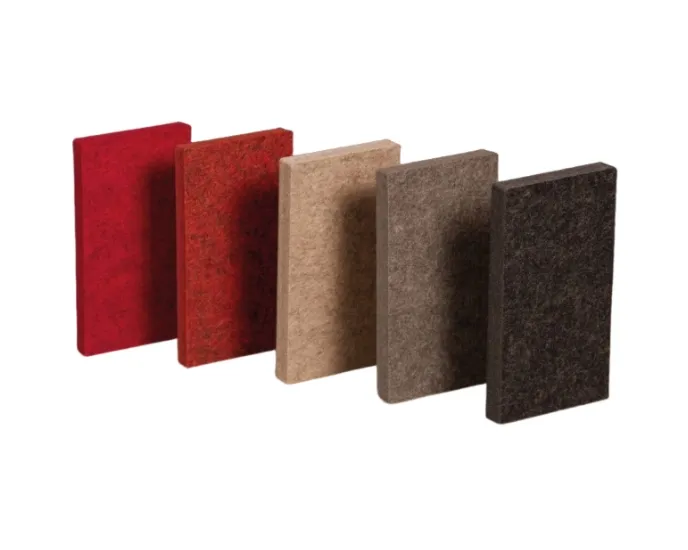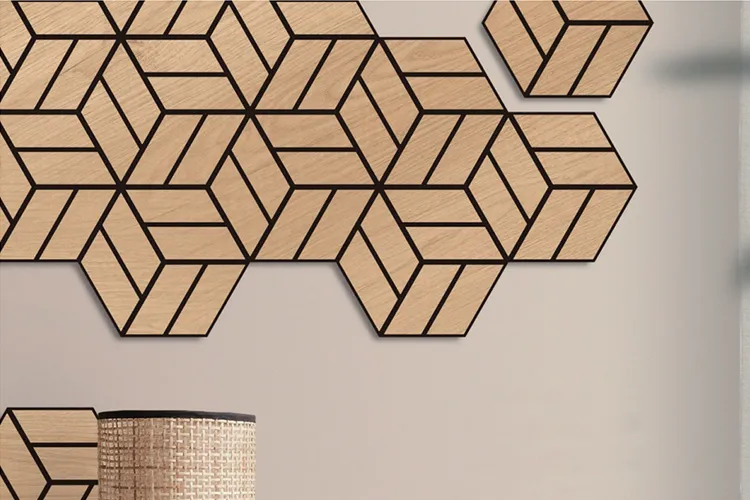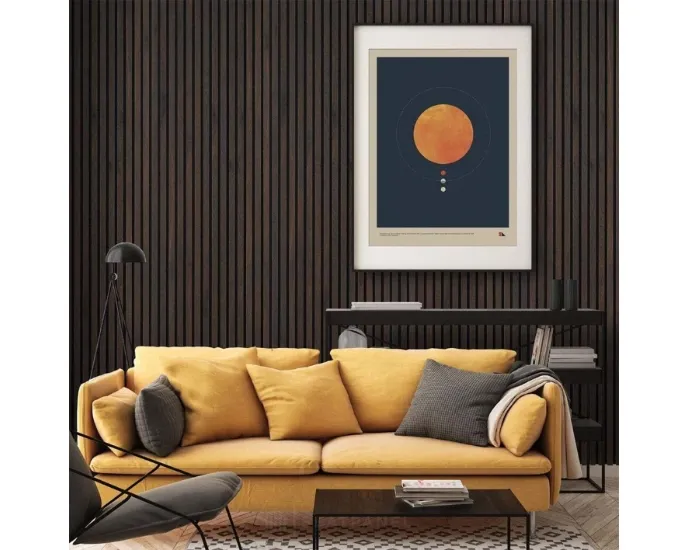Evite que su consulta sea de respuesta tardía, por favor introduzca su WhatsApp/Skype junto con el mensaje, para que podamos ponernos en contacto con usted a la primera.
Le responderemos en un plazo de 24 horas. Si para el caso urgente, por favor agregue WhatsApp/WeChat: +86-13678899682 directamente.
La mayoría de los paneles acústicos se fabrican con un marco de madera, se rellenan con materiales fonoabsorbentes y se envuelven en tela. Pero estos héroes que combaten el ruido son mucho más que eso. Vamos a explicar en pocas palabras en qué consiste un panel acústico.
Rooms with bad sound bounce noise all around. This makes it hard to hear people talk. It makes music sound bad. It makes your head hurt.
When sound waves hit hard surfaces like walls, they bounce back at you. This creates echo and makes rooms noisy. Echo happens when sound waves bounce off hard things like drywall, metal, glass, wood, tile, or concrete.
The heart of any acoustic panel is its core material. This is what does the real work of absorbing sound. Here are the main types:
Fiberglass cores give the highest NRC (Noise Reduction Coefficient) of any fabric-wrapped panel core on the market today. This makes them very good at stopping noise.
Fiberglass is one of the most common raw materials in acoustic panels because it has excellent sound absorption, resists fire, and is lightweight. It is highly effective in reducing sound echo, making it perfect for soundproofing.
Mineral wool, also known as rock wool, is made from volcanic rock, basalt, or slag that is melted at high temperatures and spun into fibers.
It has superior sound absorption compared to fiberglass and works across a wider range of frequencies. Like fiberglass, rock wool is highly fire-resistant and can stand up to high temperatures without losing performance.
PET (Polyethylene Terephthalate) acoustic panels are sound-absorbing materials designed to reduce noise and improve sound quality in various environments. Made primarily from recycled plastic bottles, these panels are a sustainable choice for soundproofing.
How PET Panels Are Made:
The process starts with: collection and cleaning of used plastic bottles to remove any dirt. The cleaned bottles are then shredded into small flakes, which are melted down to form a mixture. The melted PET is formed into large sheets or panels and then cut into the desired shapes and sizes.
At Beien, our PET panels have remarkable benefits:

Foam is the best material for acoustic panels because it completely absorbs frequencies on the surface, creating a resonance inside the cavity. This process, known as Helmholtz resonance, creates noise cancellation above the cavity.
Acoustic panels need strong frames to keep their shape and make them last a long time. The two main types are:
Most acoustic panels use wood frames because they are:
Commonly, acoustic panels are made from a timber frame with varying layers of acoustic foam.
Sometimes metal frames are used for:
Good acoustical panel fabrics are breathable and woven in a way that lets sound pass through to the core where sound is absorbed.
Acoustic fabrics are transparent to sound and can be used as a decorative wrap because they allow sound waves to pass right through to reach the sound-absorbing core.
Guilford of Maine fabrics are considered the industry standard, as many of their fabric lines are specifically designed for acoustic projects.
Nuestra paneles acústicos de madera at Beien combine beauty with function. Made from contemporary grade wood veneer that’s been carefully chosen for its consistency and character. Each panel is pre-bonded to a rigid recycled felt backing for superior soundproofing.
Wood Veneer Manufacturing Process:
Our wood veneer acoustic panels are made of milled wood veneer. Thin veneer strips with a clean, modern look are mounted on a uniquely designed, recyclable acoustic felt material.
Our standard panels are produced with a quality, smooth engineered wood veneer, designed to have a consistent grain finish. Premium panels feature a real wood veneer with a natural finish for those who prefer a more natural and unfinished aesthetic.

At Beien Construction, we specialize in paneles de listones de madera that combine aesthetics with acoustic performance.
Slatted wood panels consist of wooden slats mounted on a backing material, often foam or felt. The manufacturing process begins with selecting high-quality wood, which is then cut into slats of various sizes.
Our slat panels come in two main types: Solid Wood Slat Panels made from 100% genuine wood, and Oak Veneer Acoustic Wood Panels made using innovative MDF material. Both are designed for easy and fast DIY installation and engineered for lifetime durability.
Nuestra paneles acústicos de madera feature:

Acoustic panels are rated on how well they absorb sound:
The NRC measures panels’ performance across various frequencies. Panels with an NRC of 0.75 absorb 75% of the sound waves that hit them.
Before acoustic panels reach the market, they go through careful testing to make sure they work well for sound absorption and diffusion. These tests happen in controlled environments to measure performance across different frequencies.
As a professional manufacturer in China with over 15 years of experience and a 20,000㎡ production base, Beien Construction specializes in both PET acoustic panels and wood acoustic panels.
Nuestra paneles acústicos para cine en casa y paneles acústicos para home studio are designed for both performance and aesthetics.
Picking the right acoustic panel depends on:
Room Purpose:
Core Material:
Room Acoustics:
Another benefit of acoustic panels is that they are easy to install, whether by DIY homeowners or professionals.
For permanent wall installations with fabric wrapped panels, impaling clips and construction adhesive are the simplest and least expensive mounting option. If you need removable mechanical fasteners, Rotofast anchors or Z clips work well.
For our Paneles acústicos de poliéster PET , installation is straightforward with several mounting options depending on wall type.
Acoustic panels solve noise problems by:
| Material | Density (kg/m³) | NRC Rating | Fire Safety | Primary Application |
| Fiberglass | 48-96 | 0.7-1.05 | Class A | Studios, auditoriums |
| Mineral Wool | 40-100 | 0.75-0.95 | Non-combustible | Commercial buildings |
| PET Felt | 20-35 | 0.4-0.75 | Self-extinguishing | Offices, schools |
| Acoustic Foam | 8-12 | 0.6-0.85 | B1 rated | Home studios, podcasts |
| Cork | 120-180 | 0.5-0.65 | Natural FR | Eco-friendly spaces |
| Location | Panel Material | Results |
| Sound Therapy Studio | Wood-veneered panels | Reduced ambient noise by 75% (55dB to 42dB) |
| Open-Plan Office | PET felt tiles | Speech clarity improved by 45% (RT60 from 1.8s to 0.9s) |
| Concert Hall | Mineral wool + fabric | Achieved NRC 1.0; 18dB low frequency noise reduction |
With our paneles acústicos a medida and integrated manufacturing capabilities, Beien Construction offers competitive factory-direct pricing, fast delivery, and strict quality control.
Whether you need paneles fonoabsorbentes for a commercial project or decorative acoustic panels for a home, our team is ready to help you find the perfect acoustic solution.
Acoustic panels use smart science to make rooms sound better. The core absorbs sound, the frame gives strength, and the outer layer looks good while letting sound pass through. Different materials work better for different needs and rooms.
By understanding what acoustic panels are made of, you can choose the right ones for your space and enjoy better sound, less noise, and a more pleasant environment.
For more information or to discuss your project needs, contact Beien Construction, your acoustic panel manufacturing expert since 2009.